The OnePlus 6 Review: Among The Best Of 2018
by Andrei Frumusanu on July 27, 2018 8:30 AM EST- Posted in
- Mobile
- Smartphones
- OnePlus
- OnePlus 6
Display Measurement & Power
The OnePlus 6 comes with a 6.22” diagonal 19:9 Samsung AMOLED screen sporting a 2280 x 1080 resolution. The first impressions of the screen are generally excellent, be it that the resolution is quite stretched at this large size.
There’s no Android 8.1 colour management available for the screen, while it does support simple HDR content. OnePlus instead relies of various pre-defined colour profiles which can be found in the display settings:
The default mode is a very saturated wide gamut mode not particularly targeting any specific colour space. The firmware provides two accurate modes options representing the sRGB and DCI-P3 colour spaces. The Adaptive mode is also very much a viable alternative that again isn’t accurate to any standard, but comes with good compromises between higher colour saturation and more accurate skin tones.
As always, we thank X-Rite and SpecraCal, as measurements are performed with an X-Rite i1Pro 2 spectrophotometer, with the exception of black levels which are measured with an i1Display Pro colorimeter. Data is collected and examined using SpectraCal's CalMAN software.

Standard (sRGB)
DCI-P3 Adaptive
Starting off with the greyscale measurements we see that the screen fares quite well in terms of accuracy, albeit the colour temperature both in the sRGB and DCI-P3 modes are slightly too warm coming in at 6350K; the Adaptive mode is the only one which comes in at perfect whites of 6586K resulting in one of the bets greyscale dE2000 scores at 1.15.
 SpectraCal CalMAN
SpectraCal CalMAN
sRGB Greyscale Comparison
 SpectraCal CalMAN
SpectraCal CalMAN
Adaptive Greyscale Comparison
In terms of brightness, the screen goes up to a maximum of 420cd/m² in manual mode which is essentially standard for what we’ve seen over the years in terms of AMOLED screens. The more disappointing discovery here is that there’s no high brightness mode under default conditions and it can only be enabled at low-level driver interfaces. In effect this puts the OnePlus 6 at a visible brightness disadvantage in bright conditions, not least because of the lack of raw brightness, but also because it’s not adapting to the artificial low gamma and high saturation colour profiles that that vastly improves sunlight legibility usually found in other AMOLED devices.
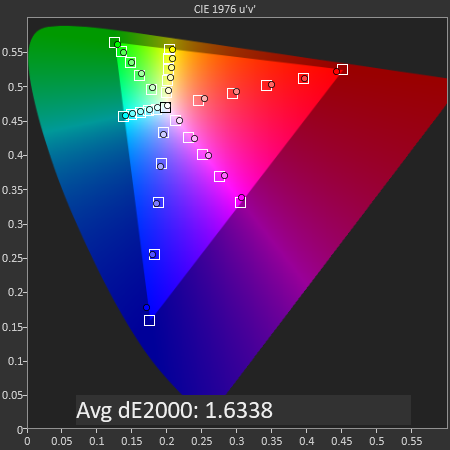
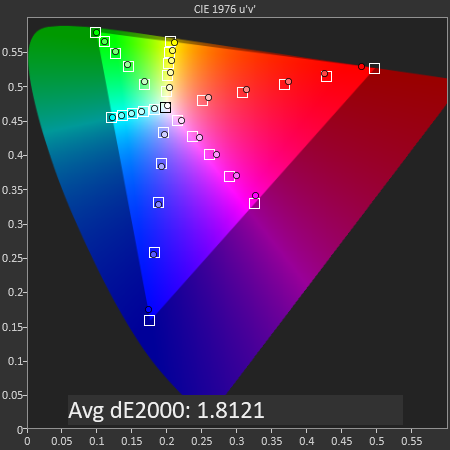 SpectraCal CalMAN
SpectraCal CalMAN
sRGB Mode / DCI-P3 Mode
The gamut and saturations accuracies for the sRGB and DCI-P3 modes are excellent, with only very slight deviations most prominent in magenta colours. In the DCI-P3 mode it also looks like OnePlus undershot the maximum chromacity for reds as it doesn’t quite reach the full gamut of the colour space – there’s also slight oversaturations in both profiles at the lower red levels meaning the colour compression on that channel is perfectly linearly configured.
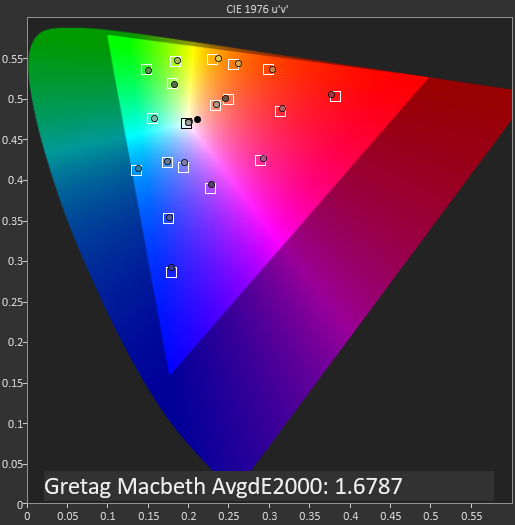
 SpectraCal CalMAN
SpectraCal CalMAN
sRGB Mode / DCI-P3 Mode
In the Gretag Macbeth charts which showcase common colour tones, both sRGB and DCI-P3 profiles perform very well with dE2000 of 1.67 and 1.87, while not perfect, it will be mostly unperceivable to most users in daily usage.
 SpectraCal CalMAN
SpectraCal CalMAN
sRGB GMB Comparison
 SpectraCal CalMAN
SpectraCal CalMAN
DCI-P3 GMB Comparison
The Adaptive mode is again extremely interesting as it doesn’t really adhere to any one colour space, and it’s something we most recently saw implemented in the MIX 2S; it’s a wide gamut colour space (DCI-P3), however skin tones are mapped to the sRGB space. This gives best compromise of bringing vivid colours to objects while attempting to display accurate skin tones. Given that this mode also has the single best pre-defined white-point, I think it’s generally the best alternative for most users.

SpectraCal CalMAN
Adaptive GMB Comparison
Overall the OnePlus 6 is an excellent screen with only two weaknesses; one of not having a high brightness mode at disposal to the user even though the hardware is capable of it, and the second point being that the resolution of the screen being rather stretched out for its form-factor.
In past OnePlus as well as most recent devices reviews we’ve brought up the point of resolution several times; as we’ll see in the battery life section there is effectively no disadvantage to 1440p AMOLED screens in terms of power as their emissive nature isn’t really affected by luminosity power efficiency deficiencies at higher resolutions the same way LCDs are, and the computational overhead of the higher resolution seems to be minimal.
What a 1440p screen would greatly differ in though is pricing, and here maybe OnePlus just isn’t ready to justify the increased component cost for devices that aim to be the best possible value.



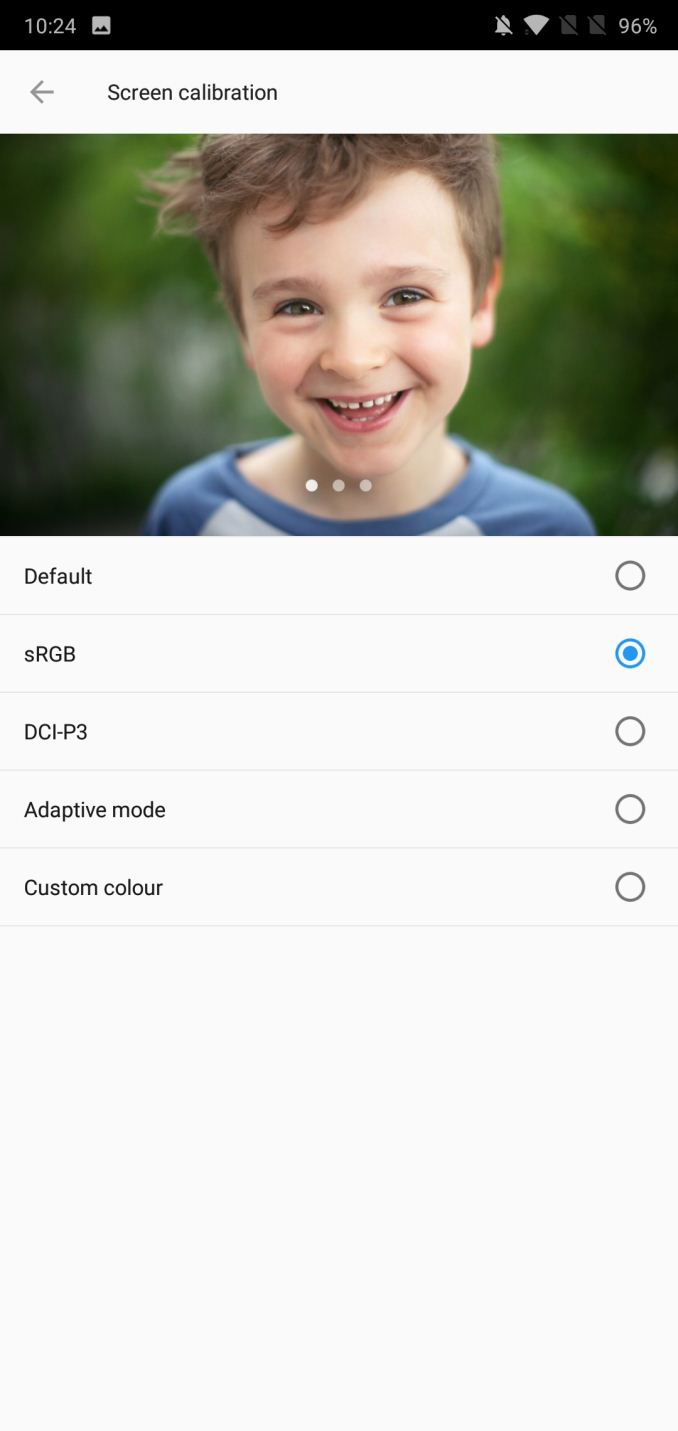
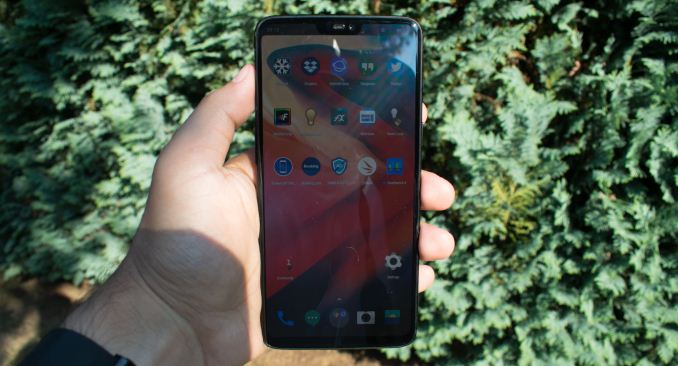
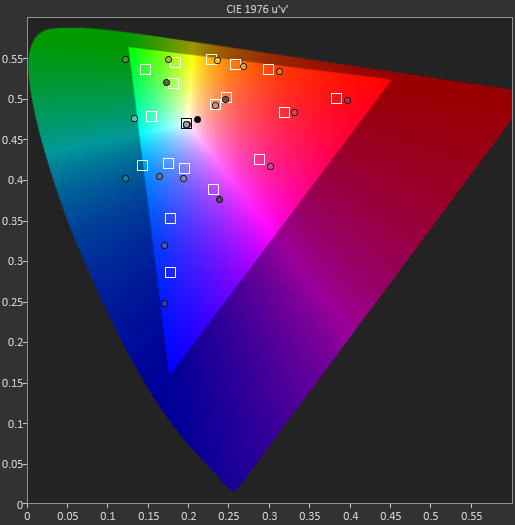








90 Comments
View All Comments
Lau_Tech - Saturday, July 28, 2018 - link
Thank you for the review Andrei! I think at this price point the oneplus 6's main problem is the lack of carrier support.In my country you can get an S9 for cheaper than a one plus 6 (with a carrier plan.)... Only people migrating to sim-only plans will still find the one plus 6 to be an attractive option.
Lau_Tech - Saturday, July 28, 2018 - link
Also would recommend some analysis of the fingerprint/face scanner ease of use Andrei... Something to consider for future reviews.diamondbackbilliards - Saturday, July 28, 2018 - link
More Like IphoneX but I hope beats the Iphone on multitasking level. as iphone can handle no lag even if you left 30 apps open. heavy or light.djayjp - Saturday, July 28, 2018 - link
Yes, buy a oneplus or a Huawei and have your data tracked (and likely hacked) by the Chinese government.PeachNCream - Saturday, July 28, 2018 - link
There's no evidence that phones made by Chinese companies are actually being used for spying at least not outside routine data collection inherent to all Google powered devices. The UA government has an advisory publication out discouraging their use as a precaution where government furnished cellular hardware is concerned, but I wouldn't universally apply that to private citizens that just want to hide their dirty pics from a spouse.djayjp - Monday, July 30, 2018 - link
Yeah you can give the Communist party all of your log in info and have them track you and steal IP. You have no idea how scary things are in China. There is ample evidence the Chinese government does hack. Look up about their new 1984 citizen points system.djayjp - Monday, July 30, 2018 - link
Maybe you'll disappear one day. But don't worry, your organs will be of great benefit to the party leaders.Greg E - Saturday, July 28, 2018 - link
Very useful review, if a little late for my purchase decision :>) A few comments from a user of about a month: 1) I waffled about the notch, finally "turned it off". This makes the notch background always black, which means that the stupid Google decision to not allow colored icons in the notification tray (because that would conflict with the uncontrolled background color) can maybe go away. I sorely miss having some icons easily spotted by use of color. 2) You don't comment on the utility (or otherwise) of the fingerprint sensor on the back. On my previous phone (Note 4) I didn't bother with security, as it was too much hassle. With a reachable, tappable (ie not swipe) FPS, this is easy, so I use it. I no longer use the power button or double-tap on screen to wake the phone, as the FPS does that along with security. 3) I don't care for the glass back either, but I read somewhere that this contributes to better radio performance. My experience in that regard has been pretty good, but I am not in a position to test (hint, hint). Also, this may put them in good position to add 5G antennae in the next generation. Can you comment on this?Andrei Frumusanu - Saturday, July 28, 2018 - link
2) FPS' have been around for long enough now that I generally don't have much to talk about them. Personally as I have like 15 devices on my desk I don't have them on by default and beyond shortly testing them.3) Radio performance testing is insanely hard to do correctly and requires >$60k of equipment or very close cooperation with an RF lab - currently we don't have any of the prerequisites. Also I've seen in the past that posting subjective or amateurish testing can be completely wrong so I prefer not to write about it rather than write misleading things when I have no sense of certainty on the topic.
ZolaIII - Sunday, July 29, 2018 - link
What makes the most on RF (radio) performance is traditionally antenna straight (size) and amplifier. So you have old chunky big antenna M's from late 90's that can get the signal when digged 6 fits under. Glass isn't particularly better than let's say plastic in letting analogue signals true but metals block them. Its a final time to step up and use nano tube polymers for phone casing or at least first gen of so called liquid metals (that actually don't have anything common with metal except straight)...